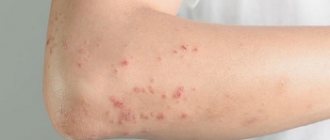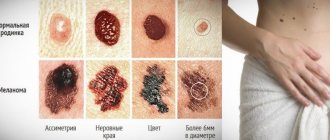A lump appears on my lip: what should I do?
During your life, bumps, moles, and wen may form on your body.
These processes can also occur on the lip. They arise on the inside or outside. In this case, you should definitely consult a doctor and undergo an examination. Let's talk about the most common formations. If a ball appears on any lip inside or a bubble that does not hurt, we can assume that this is a mucocele cyst. It will have a bluish tint. It will make you feel uncomfortable. The possibility of an oncological tumor forming in its place is almost impossible. But this does not mean that they do not need to be examined and treated. There are exceptions and any pathology can develop.
Let's go to the doctor
The formation of any tumors, lumps, growths requires a medical examination. This applies to people of any age and especially to newborns. If a lump appears on your lip, it may indicate the development of complex diseases and pathologies. At the same time, if you experience additional symptoms, you can talk about the development of a dermatological disease. They can degenerate into cancer.
You've heard that you shouldn't try to remove moles on your own. Because they can turn from a benign tumor to a malignant one. This approach is also necessary for white bumps that are located inside the tissues. I bit my lip, but the wound does not heal for a long time, what should I do? Any surgical intervention or course of treatment is possible only in a hospital and under the supervision of a doctor. A lump on your lip, inside or outside, can develop into cancer.
A white bump on your lip needs to be examined and removed. Contact clinics that have special licenses, equipment and a good reputation. During an operation, much depends on the qualifications of the surgeon and his experience. Local anesthesia is used to remove the lumps and you will not feel any pain.
Lump on the lip from the inside and outside: what is it, treatment.
If the eyes are the mirror of the soul, then by the appearance of the lips one can get an impression of the general condition of the body, health, habits, and lifestyle of a person. Diagnosis of many diseases pays special attention to this organ.
A large number of nerve endings and a thin layer of upper epithelium increase sensitivity many times compared to fingertips, so the slightest changes in tissue integrity, especially a lump inside the lip, are perceived more acutely.
Photo of HSV (herpes simplex virus)
Depending on the type
If a lump appears on the lower lip or on the upper lip, or a lump appears on the inside of the lip, depending on its type, the symptoms and features of the formation are determined:
- Cyst. It is a mucous neoplasm containing a clear or light yellow liquid inside. There is no pain when palpated, the formation is soft.
- Mucocele cyst. This is a benign formation and in some cases causes discomfort. More often it may appear on the surface of the lower lip. Outwardly it looks like a round, movable lump; the diameter varies from 2 to 10 millimeters. The color can be blue, lilac or pink.
- Hematoma due to mechanical damage (if a person has bitten or cut the skin). Its appearance is accompanied by pain and burning upon contact with food. The color is red or bluish, sometimes the lump can be black if it is severely damaged.
- Burn. When the integrity of the epithelium is damaged due to thermal factors, severe pain, redness, inflammation, and swelling appear along with the lump. Depending on the severity of the burn, symptoms will appear. Sometimes it is not a clear lump, but a blood lump.
- Infectious process. The appearance of a neoplasm is accompanied by symptoms such as discomfort, constant aching pain, burning or itching. Size and color depend on the pathogen.
- Herpes. Single or focal blistering rashes appear around the mouth. They are accompanied by burning, pain, and intense itching. These formations contain liquid inside.
- Papilloma. Symptoms will appear depending on the stage of development of the pathological process. When small formations appear, only aesthetic discomfort usually occurs. If the papilloma is large in size, it causes a lot of inconvenience when talking and eating. Sizes vary from 10 to 20 millimeters. Black warts are most often single. The advanced stage is manifested by the merging of formations into one large growth that covers the entire surface of the lip.
- Allergic reaction to various irritants. Seals are accompanied by the appearance of swelling, inflammation, and pain. Usually the cones are dense and white or pink. Both children and adults are equally susceptible to this disease.
- Fibroma. When such a neoplasm first appears, there are no characteristic signs. The growth of fibroids occurs slowly and is almost invisible to humans. As the pathological process progresses, inflammation, ulceration of the growth, redness and swelling, and pain occur. It can appear on both the inside and outside of the lips.
- Hemangioma. In the area where this neoplasm appears, the skin is thinned and cracks. Bleeding and inflammation occurs. The formation usually has a dense consistency and a round shape. Dimensions can vary up to 2 centimeters. Located on the inside of the lip.
- Malignant neoplasm. Bumps appear on the outside or inside the lips, and they are covered with bleeding ulcers on top. Accompanied by severe pain and weakness.
Only a doctor decides how to treat such tumors in a child or an adult. Treatment tactics directly depend on the size, location and type of formations.
Prevention
RµÃºÃ¾Ã¼ÃµÃ½Ã´Ã°ÃÂøø ôûàÿÃÂõôþÃÂòÃÂð › óÃÂñðÃÂ:
- áþñûÃÂôðÃÂàóøóøõýÃÂ. GALA þñÃÂõÃÂÃÂòõýýÃÂàüõÃÂÃÂ, ÃÂøÃÂÃÂøÃÂàà·ÃÂñà2 ÃÂð÷ð ò ôõýÃÂ, ÿþÃÂõÃÂðÃÂàÃÂÃÂÃ¾à ¼Ã °ÃÂþûþóð ÃÂð÷ ò óþô, ûõÃÂøÃÂà÷ÃÂñàø ôõÃÂýÃÂ.
- ÃÂõ ÿþûÃÂ÷þòðÃÂÃÂÃÂàÃÂÃÂöøüø ÿÃÂõà ôüõÃÂðüø ûøÃÂýþù óøóøõýà(÷ÃÂà±Ã½ÃÂüø ÃÂõÃÂúðüø, ÿþÃÂ" þÃÂõýÃÂðüø, ñÃÂøÃÂòõýýÃÂüø ÃÂÃÂðà½ÃºÃ°Ã¼Ã¸).
- ÃÂÃÂúð÷ðÃÂÂÃÂàþàòÃÂõôýÃÂàÿÃÂøòÃÂà VALUE ³ÃÂñÃÂ, úÃÂÃÂøÂÃÂ, ÃÂÿþÃÂÃÂõñûÃÂÃÂÃ Ã°Ã»ÃºÃ¾à ³Ã¾Ã»Ã Ã¸ ýðÃÂúþÃÂøúø).
- ÃÂúûÃÂÃÂøÃÂàò ÃÂðÃÂøþý ÿÃÂþôÃÂúÃÂÃÂ, àThe üøúÃÂþÃÂûõüõýÃÂðüø. ÃÂþ ÃÂõúþüõýôðÃÂøø òÃÂðÃÂð ÿøÃÂà A °ÃÂðÃÂÃÂ.
- ãÃÂðöøòðÃÂà÷ð úþöõù óÃÂñ: ÃÂòÃȈ ñðûÃÂ÷ðüðüø ø óøÃ³Ã¸ÃµÃ½à ¸ Ãâteµãâ] ¾â bowlates Ãâ¸, ãâ ãâµãâããããããâ ã] ± ã] ° ° ãâ ãâting °ã²ã²²ã²²ãããâããããather ãâign ã] ã] ¸ ø ÃÂðýúø.
- ãÿþÃÂÃÂõñûÃÂÃÂàñþûÃÂÃÂõ öøôúþÃÂàø úðú ò ÿõÃÂøþô ñþûõ÷ýø, ÃÂðú ø ÿþÃÂû õ òÃÂ÷ôþÃÂþòûõýøà(ýõ üõýõõ 2 ûøÃÂÃÂþò).
âðúøü þñÃÂð÷þü, ñþûÃÂÃÂúø ýð à³ÃÂñðàøüõÃÂàÃÂð÷ýÃÂàÿÃÂøÃÂþôàÿþ ÃÂòûõýøà. þÃÂòûõýøõ þôýøàþñÃÂÃÂûþòÃȈ VALUE õôþù ôÃÂÃÂóøàÃÂû ðñÃÂü øüüÃÂýøÃÂõÃÂþü, ÃÂÃÂõÃÂÃÂøàâ A VALUE ³Ã°Ã½Ã¸Ã·Ã¼Ã¾Ã².
› ÃÂñàÿÃÂøÃÂøýþù ñþûõ÷ýø, òþÃÂàÃÂðýþòûõýøõü ÃÂþÃÂÃÂþÃÂýøàóÃÂñ ¸ ÃÂúÃÂõÿûõýøàøüüÃÂýøÃÂõÃÂð. þÃÂýþòðü ÿÃÂþÃÂøûðúÃÂøúø þÃÂà › ±Ã»ÃÂôõýøàóøóøõýøÃÂõÃÂúøàÿÃÂÃ В° òøû ø ÃÂúÃÂõÿûõýøàøüüÃÂýøÃÂõ ÃÂð.
Types of formations
When it is necessary to remove a scar on the lip, you must first determine what type it is. There are several of them:
We invite you to familiarize yourself. Are there any female dental technicians here? Please advise.
| Types of scars | Description | Photo |
| Normotrophic | It is a mark that differs from other fabrics only in color. These are the easiest scars to simply disguise and practically do not require serious removal measures. A normotrophic scar may differ from normal tissue in sensitivity | |
| Atrophic | It looks like a depression on the skin of the lips, as it is formed when there is a deficiency of collagen in this area | |
| Hypertrophic | This formation protrudes against the background of the rest of the surface of the lip. Sometimes it can be very noticeable. In addition, a hypertrophic scar has a bright color. The cause of this type is infection of the lesion on the lip. | |
| Keloid | The difference that makes this type the most problematic to eliminate is its ability to grow tissue. Reduced immunity affects the formation of keloid scars |
Herpes virus
The most common cause of a lip pellet is herpes. A disease of a viral nature, the symptom of which is the appearance of one or more blistering rashes on the surface of the lip or on the mucous membrane. Inside the rash there is a liquid that flows out as the formation matures.
Often the wound surface is covered with a purulent crust. This disease is characterized by increased temperature, burning and pain at the site of the rash. Herpes is located on both the upper and lower lips.
If herpes comes out, then the main cause is considered to be infection with the virus from the carrier. However, it should be remembered that the disease develops only in an organism with a weakened immune system.
"Diagnosis" means: recognition
To make an accurate diagnosis, it is important to establish the cause of the disease, the characteristic appearance of the neoplasm, and the absence of significant deviations in the composition of the blood during its examination.
These methods give an idea of the structure of the gland, the presence of a stone in its duct and make it possible to exclude malignant neoplasms.
The final diagnosis is made after a histological examination of the material obtained during the operation.
Medicines
The drugs used in the treatment of formations on the lip include the following groups of drugs:
| Antibacterial drugs | Used for inflammatory processes resulting from infection of the body by bacteria. | Penicillin, Tetracycline, Amoxicillin |
| Antiviral agents | They are used for herpes and human papillomavirus, which cause inflammation on the lip. | Tamiflu, Amantandin, Remantandin |
| Antiseptics | They disinfect the area of inflammation, kill pathogenic microorganisms, and accelerate the healing process. | Chlorhexidine, Miramistin, Dioxidine |
| Dental gels | Used for infections and injuries caused by dental procedures. Relieves pain and itching. | Metrogil Denta, Kamistad, Holisal |
| Healing ointments | Accelerate the regeneration of tissues and skin, stimulate rapid healing of the damaged area. | Solcoseryl, Levomekol, Panthenol |
| Antihistamines | Relieves symptoms of inflammation, relieves itching and discomfort. Used for allergies and insect bites. | Suprastin, Cetrin, Clemastin |
| Nonsteroidal anti-inflammatory drugs | Used for bumps and growths that cause pain. Relieves pain, inflammation and fever. | Ibuprofen, Diclofenac, Nimesulide |
| Systemic and natural immunomodulators | Strengthen the human immune system, stimulate rapid recovery from infectious diseases of viral and bacterial origin. | Ingavirin, Echinacea, Eleutherococcus |
| Vitamin complexes | Supradin, Alphabet |
We suggest you familiarize yourself with how to place a crown on a tooth and how much the procedure costs
Amoxicillin is used to treat bacterial lumps
What medications should I treat?
It depends on the cause of the pathology:
- In case of infection, external and internal drugs may be prescribed. What exactly to buy at the pharmacy and how to use it depends on many parameters, including the type of pathogen and the severity of the disease;
- for allergic etiology of the bump on the lip, antihistamines are indicated;
- The decision on treatment methods for malignant pathology is made by an oncologist. As a rule, this is a whole range of measures, including chemotherapy and radiation exposure.
We suggest you read: How to treat irritation on the lips
Tea tree oil
Tea tree oil is a product that allows you to cope with inflammation of any origin. To treat bumps on the lip, it is used along with honey.
Tea tree oil will help cope with a lump on the lip of almost any origin.
- 1 tsp. Mix tea tree oil with 2 tbsp. l. spoons of warm honey.
- Apply the mixture to a cotton pad and secure it to the damaged area with a band-aid.
- Leave the compress overnight.
The lump decreases in size and disappears after 3-4 applications.
Traditional treatment
A lump on the inside of the lip is usually harmless, but is annoying enough to ignore. Depending on the cause, it may soon go away on its own after some time. But more often, in order to get rid of such formation, it is necessary to resort to certain methods of treatment.
Injections
If the bumps cause inflammation of the mucous membrane, corticosteroid injections will ease the symptoms.
Cryotherapy
Can cryotherapy cure lip bumps? This procedure can get rid of them, but only in some cases, because it is usually not used for these purposes. With this treatment, liquid nitrogen freezes formations that are not amenable to other methods of therapy.
Patients should be aware that this treatment may result in blistering.
Location Features
Of the entire range of techniques for improving the line and volume of lips, hyaluronate is the leader. This is a natural component responsible for retaining water in cells. With age, acid production decreases and skin turgor decreases.
To give the lips an aesthetically attractive appearance, the cosmetologist begins several stages of therapy:
- Analysis of the client's health status and wishes.
- No contraindications.
- Selection of injection technique.
- Anesthesia (numbing cream or injections).
- Injections.
- Relieving swelling.
- Recommendations (time of correction, methods of care).
Hyaluronic acid is used to improve the contour of the face, the volume of the cheekbones and eliminate facial wrinkles. Pharmacy displays offer a wide selection of fillers, the most popular and safest drug from a Swedish company is Restylane. Using a syringe with a thin needle, the gel is injected into the layers of the dermis, increasing its elasticity and stimulating the production of natural collagen.
We suggest you read: How to treat gumboil after tooth extraction
Most often the ball appears on the lower lip. In only 5% of cases, a blister may appear on the upper lip. The ball-shaped seal that appears is classified according to the following criteria:
- Location. One or many spherules may appear on the surface of the epithelium or within it.
- Content type. The exudate inside the vesicle may be clear or purulent.
- Causes painful sensations or does not cause any sensations.
- Growth rate. A malignant tumor can grow slowly, but a herpes, boil, or cyst can grow quickly.
Causes of bumps
The inner ball on the lip appears for various reasons. The main factors include the following:
- Mechanical injury to the soft layers of the epidermis - if biting is unsuccessful, a person can bite the lip and injure it. As a result, a wound appears. If it is not treated in any way, then a compaction may develop. When damaged, the mucous membrane becomes vulnerable, and bacteria, viruses and other pathogenic organisms begin to actively multiply in it. Injury can occur when wearing braces or piercings, dentures, natural curvature of teeth, or a thermal burn. Often, after impacts, lumps appear in a child, since children are more active than adults and fall more often.
- Viruses – The oral cavity is an ideal place for viruses to multiply. Enteroviruses, herpes viruses, stomatitis, and herpes zoster actively develop in it. As a result, patients notice that a lump has appeared on the lip.
- Inflammation of the salivary gland - in this case, a mucocele or lump appears in the patient’s mouth. The functioning of the salivary glands is usually disrupted due to an unsuccessful puncture (piercing), burn or biting.
- Allergic reactions - sometimes when consuming irritating foods or medications, the patient develops large pimples and swelling on the face and lips. The condition is accompanied by hyperemia, swelling and itching. In this case, you need to take an antihistamine and urgently call an ambulance or go to the hospital department yourself.
Sometimes patients have combined factors that influence the development of lumps. In this case, a complication is possible or the ball will appear several times (remission of the disease is observed).
Manifestations of a cyst
Symptoms of a retention cyst of the lower lip can be subtle and sluggish. Therefore, attention is not always paid to it immediately, which negatively affects subsequent treatment.
How does this disease manifest itself? A slight compaction is felt on the lower lip, which can be better seen in the mirror when the lip itself is everted. The neoplasm looks like a small ball with a diameter of up to two centimeters.
The cyst may be soft or firm to the touch, filled with mobile, clear fluid. Sometimes, if accidentally bitten, liquid may leak out.
But after some time, the cyst fills up again, and this time it may even become larger and harder. Therefore, the patient is strictly prohibited from removing or squeezing out the cyst himself.
This should only be done by a specialist in order to avoid infection of the open wound and further spread of the disease.











